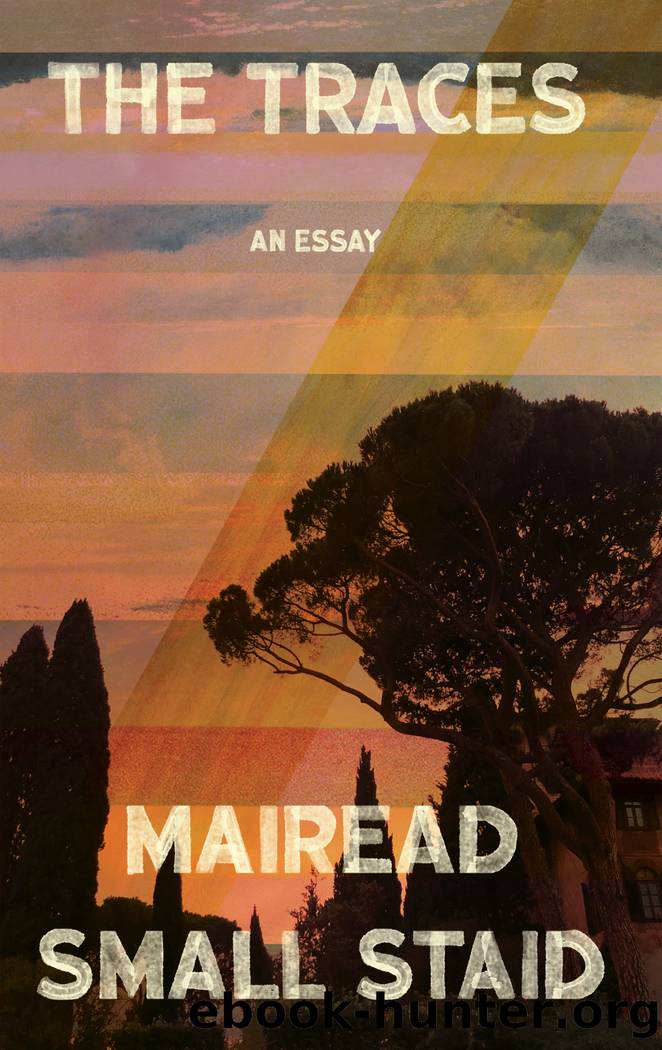The Traces by Mairead Small Staid

Author:Mairead Small Staid
Language: eng
Format: epub
Publisher: Deep Vellum Publishing
âIt is the motion of the hands,â says Goethe, the hands that distinguish Leonardoâs greatest work, such gestures a âresource ⦠obvious to an Italian.â In other pages, the Italian Marco Polo has grown fluent in the language of the Great Khan, able to describe every detail of the places he has visited, and yet: â[W]hen Polo began to talk about how life must be in those places, day after day, evening after evening, words failed him, and little by little, he went back to relying on gestures,â writes Calvino, âholding up his hands, palms out, or backs, or sideways, in straight or oblique movements, spasmodic or slow.â
This gesticulation is innate, embedded in our (human, not Italian) circuitry: just as specialized neurons in our brains interpret facial expressions, reading sorrow or joy or deceit in them, others have evolved to interpret the movements of hands, a holdover from the preverbal communication of our distant ancestors. We can read each otherâs gesti like so many skimmed pages. âIt is the most literary of all great pictures,â says Clark of The Last Supper, recognizing the full sentences written in the disciplesâ uplifted hands.
But Clark argues that our focus on the fingers might stem from the fact that the saintsâ facesâwhere our brainsâ dancing neurons might otherwise find the emotions they seekâhave been so badly damaged over the centuries: their visages bear the brunt of past restorersâ ineptitude. âHad the original heads been there, with all their pathos and dramatic intensity, the gestures,â he writes, could have resumed âa subsidiary role.â Instead, we rely on the hands to tell the story. Under such weight, says Clark, their weakness is revealed. âThe whole force of gesture, as an expression of emotion, lies in its spontaneity,â he writes, âand the gestures in The Last Supper are not spontaneous.â No, they are not. Among Leonardoâs notes, we find these descriptions: âAnother twisting the fingers of his hands, turns with stern brows to his companions. Another with his hands spread shows the palms, and shrugs his shoulders up to his ears, making a mouth of astonishment.â And another, and another. A good painter must paint both man and the intention of his soul, remember? Our hands most readily hold those intentions, and give them away.
But I find in Leonardoâs hands, in Poloâs sign language, in Z.âs ready gesturesâa constant of these weeks and monthsâa turning away not from the faceâs expression but from the words that would pour forth from it. âThere is something indecent in words,â says one of Cesare Paveseâs narrators. âSometimes I wished I were more ashamed of using them.â (I read this line aloud to Z., who tosses one hand up and out in agreement.) Should I be more ashamedâor wish to beâof these thousands upon thousands of words? âThere is no language without deceit,â says Calvino, or one of his characters, but the revelations of another city argue yet another side: âFalsehood is never in words; it is in things.â
An alternative is at work in the bodyâs expressions, both facial and gesturalâthe pointing finger and the smile.
Download
This site does not store any files on its server. We only index and link to content provided by other sites. Please contact the content providers to delete copyright contents if any and email us, we'll remove relevant links or contents immediately.
Annapurna by Maurice Herzog(3425)
Liar's Poker by Michael Lewis(3372)
A Forest Journey by John Perlin(3027)
Atlas Obscura by Joshua Foer(2901)
The Ogre by Doug Scott(2635)
Cuba by Lonely Planet(2579)
Photographic Guide to the Birds of Indonesia by Strange Morten;(2492)
Tokyo by Rob Goss(2390)
All Things Reconsidered by Bill Thompson III(2358)
The Splendid and the Vile by Erik Larson(2357)
Fatal Storm by Rob Mundle(2174)
INTO THE WILD by Jon Krakauer(2158)
A TIME OF GIFTS by Patrick Leigh Fermor(2156)
DK Eyewitness Top 10 Travel Guides Orlando by DK(2131)
Trail Magic by Trevelyan Quest Edwards & Hazel Edwards(2127)
Touching the Void by Joe Simpson(2091)
Top 10 Dubai and Abu Dhabi by DK Travel(2059)
Abbey in America by Murray John A(2050)
Lonely Planet Australia by Lonely Planet(2034)
